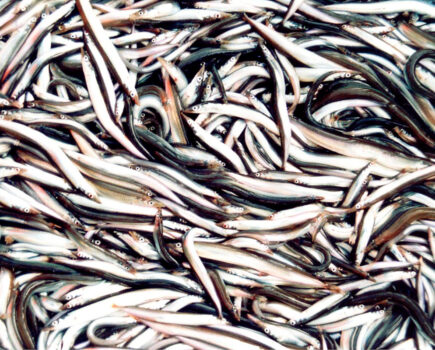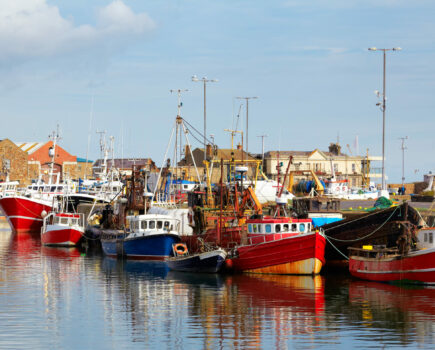Cefas addresses growing concerns about effects on fish and fisheries
A recent report from a workshop convened to look at electric and magnetic fields (EMF) generated by offshore power cables starts with the comment: “It is now recognised… that EMFs may have impacts on marine species.” So far, so clear.
The workshop, which brought together a wide range of experts, and was funded by the Crown Estate, looked at how to measure and estimate the EMFs of cables in their many different guises across the offshore power industry, and then how to apply this knowledge to actual impact on marine species.
The full report of the workshop, put together by Cefas, ‘Electromagnetic fields (EMFs) from subsea power cables in the natural marine environment’, can be downloaded at: bit.ly/3Ou7gnl if you feel brave enough – it is not for the fainthearted.
The report is a step in the right direction towards a huge raft of unanswered questions about the effects of power cables. EMF can have a huge range of impacts, ranging from the behaviour of newly hatched fish larvae reacting to the very weak but persistent currents close to turbine structures themselves, all the way to the refusal of some fish and shellfish species to migrate across exposed interconnector cables.
The insights gained, says the Crown Estate, will feed into wider work being funded through the £50m Offshore Wind Evidence and Change Programme. This incorporates a number of other ongoing programmes, several of which are aimed specifically at fisheries impacts.
These include a project with the SFF and NFFO to map fishing effort and understand the potential economic impacts of the construction of offshore wind farms in Scotland, a major project to look at the impact on the seabed of piles used for floating wind turbines, and the aptly titled project NICE.
NICE stands for Nature Inclusive Cable Enhancement and Protection. The project is looking at how cable protection systems can provide structures and habitat to species such as soft corals, mussels, crabs, lobsters and fish. Small tweaks in the design of rock armour and other types of cable protection can have huge benefits for settlement and survival of species such as lobster, and even act as reefs that attract finfish species.
FN reported recently on similar work being undertaken by a PhD student at Aberystwyth University, looking at the foraging of lobsters around wind turbine structures, where there is a clear potential to mitigate impacts of offshore developments on the fishing industry through habitat enhancement and creation.
“This an example of the Crown Estate’s commitment to collaborate with and support the fishing industry and communities through research and engagement, enabling better co-existence between fish, fisheries and the growing offshore wind sector across the UK,” a spokesperson said.
Olivia Thomas, head of marine planning at the Crown Estate, added: “The UK’s offshore wind champion Tim Pick highlighted that a lack of reliable data is a major contributor to delays in the consenting process, which is why the work of the £50m Offshore Wind Evidence and Change (OWEC) programme is so important.
“Through OWEC, we are delighted to have invested £1.4m to make this pioneering research possible. It contributes to a growing body of evidence to support the co-existence of vital industries such as fishing and offshore wind, to help the UK meet its net zero targets, and to encourage a thriving marine environment.”
Offshore energy downturn: Inflation, shortages and National Grid iAssues – is the wind power party over?
A number of announcements from offshore wind developers across the world has shown that the once buoyant sector is being hit by a perfect storm of rising costs and skills and components shortages, after years of growth and ever more profitable pricing structures for the energy they are producing.
In the UK, on top of this, a failure to build the shore-based infrastructure in the National Grid has meant that to date approximately £800m in earnings has been lost by existing offshore operators, who simply have nowhere to send their energy.
Ørsted, the largest windpower developer in the North Sea, has confirmed that it is selling its stake in the 630MW London Array – at the time the most ambitious offshore development in the world. Operating then as Dong Energy, it had a 50% stake in the operation, which has been successfully generating energy for many years. It sold its final 25% stake to an asset management group for £717m last week.
The funds raised are thought to be going towards Ørsted’s even bigger new project, the 2.8GW Hornsea 3 in the North Sea. It has already commented about the rising costs of that development, and the potential lack of profitability due to the contract prices for the power produced, agreed during the Crown Estate bidding process, that are now seen as unprofitable.
Industry insiders say that worldwide, the company has $71bn of development commitments, at a time of rising interest rates and steep increases in the costs of raw materials.
The company has also cancelled a contract off the coast of Rhode Island – one of several similar cancellations announced in the USA in the last few weeks.
Another North Sea developer, Swedish company Vattenfall, has confirmed plans to halt development of its 1.4GW Norfolk Boreas project. This announcement comes just 12 months after the initial contract with the Crown Estate was confirmed, showing the huge shift in the investment background in the last year, with inflationary costs in the offshore wind industry estimated at a staggering 40%.
A further round of contract bidding being run by the Crown Estate – the fifth – is due to complete in the coming months, with the likelihood that the companies who remain interested will price their power significantly higher, whilst also making clear the need for UK government investment in the National Grid, to ensure that completed developments are able to start selling electricity as soon as they have the capacity.
The unanswered question, of course, is where all this leaves the fishing industry.
This story was taken from the latest issue of Fishing News. For more up-to-date and in-depth reports on the UK and Irish commercial fishing sector, subscribe to Fishing News here or buy the latest single issue for just £3.30 here.
Sign up to Fishing News’ FREE e-newsletter here.








